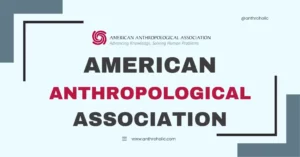AI Answer Evaluation Platform Live Now. Try Free Answer Evaluation Now
Bronze Age
The Bronze Age is an incredibly important period in human history. Named for the significant technological development of smelting copper with tin to create bronze, it was an era that brought forth complex societies, specialized labor, and interregional trade. The Bronze Age typically comes after the Stone Age and before the Iron Age, although precise timelines vary globally due to the uneven progress of technological developments.

Chronology and Regional Variations
The Bronze Age is not universally consistent across different cultures and regions. The table below provides a general chronology:
| Region | Approximate Dates |
|---|---|
| Near East | 3300–1200 BC |
| Europe | 3200–600 BC |
| India | 3300–1200 BC |
| China | 2000–700 BC |
While the Near East and Europe enjoyed the Bronze Age’s advent around 3300 BC and 3200 BC respectively, regions like China didn’t experience this transition until around 2000 BC.
Technological Advancements
Metalwork
The primary advancement defining this era was the introduction of metalwork, specifically the creation and utilization of bronze, a superior alternative to the previously used stone and copper.
Key Bronze Age Innovations in Metalwork included:
- Bronze Tools and Weapons: Including axes, chisels, spears, and daggers, these were more durable and efficient than their stone or copper counterparts.
- Lost-wax Casting: A technique for making complex, three-dimensional objects.
Other Technologies
Other key innovations of this age, though less defining, were equally impactful:
- Pottery Wheel: Improved efficiency and quality of pottery production.
- Writing Systems: Such as Cuneiform and Hieroglyphics, leading to advanced record-keeping and administration.
- Horse-drawn chariots: Revolutionizing warfare and transportation.
Societal Changes
As the technology evolved, so did society. The Bronze Age saw significant changes in how people lived and organized themselves.
- Specialization and Urbanization: As communities began mastering bronze work, specialized labor emerged. Not everyone needed to be involved in food production. Some people became artisans, merchants, soldiers, or administrators, leading to the formation of cities and complex societies.
- Trade Networks: The Bronze Age saw the rise of long-distance trade networks, driven primarily by the need for tin, which was often located far from copper sources. Trade routes connected cultures across vast regions, spreading ideas and innovations alongside goods.
- Religion and Art: Art and religion flourished in the Bronze Age. Iconography in artifacts and buildings suggest a complex spiritual belief system. Art became increasingly sophisticated, as demonstrated by the elaborate frescoes of the Minoan civilization and the intricate metalwork of the Únětice culture in Central Europe.
Notable Bronze Age Civilizations
In many regions of the world, the Bronze Age marked the formation of early states or complex societies with distinct social classes.
The Minoans (Crete, c. 2700-1450 BC)
The Minoan civilization is one of the most fascinating cultures of the Bronze Age. Known for their intricate palace complexes, frescoes, and pottery, the Minoans had a strong maritime presence and influence across the Mediterranean. The palace at Knossos is a quintessential example of their architectural prowess.
The Mycenaeans (Mainland Greece, c. 1600-1100 BC)
The Mycenaeans, who built their civilization upon Minoan influences, left behind impressive fortifications, tombs, and artifacts. Their script, known as Linear B, is the earliest documented form of the Greek language.
The Indus Valley Civilization (Modern-day Pakistan and India, c. 3300–1300 BC)
The Indus Valley Civilization (Harappan Civilization) is noted for its urban planning. The cities of Mohenjo-daro and Harappa had complex drainage systems, brick-built houses, and evidence of skilled metalworking.
Shang Dynasty (China, c. 1600–1046 BC)
The Shang Dynasty is known for its advanced bronze casting technology and its well-preserved oracle bones, which provide early examples of Chinese script.
Collapse of the Bronze Age
The end of the Bronze Age around 1200 BC is marked by the collapse of many prominent civilizations in the eastern Mediterranean. Known as the Late Bronze Age Collapse, this period saw a widespread decline in complex societies and a return to simpler forms of living. Possible causes include invasions (such as the Sea Peoples), natural disasters, internal rebellions, and the disruption of trade routes.
Legacy of the Bronze Age
The Bronze Age left an indelible mark on human history. The technologies, social structures, and ideas developed during this time helped shape the Iron Age and all subsequent ages. Today, our understanding of this era continues to grow as archaeologists unearth more about these ancient societies.
References
- Childe, V. G. (1930). The Bronze Age. Cambridge University Press.
- Fagan, B. M. (1990). The Journey from Eden. Thames and Hudson.
- Kristiansen, K., & Larsson, T. B. (2005). The Rise of Bronze Age Society. Cambridge University Press.
- Muhly, J. D. (1988). The Beginnings of Metallurgy in the Old World. In “The Beginning of the Use of Metals and Alloys”. MIT Press. https://www.academia.edu/378211/Introduction_The_Beginnings_of_Metallurgy_in_Global_Perspective
- Castleden, R. (1993). Minoans: Life in Bronze Age Crete. Routledge.
- Chadwick, J. (1976). The Mycenaean World. Cambridge University Press.
- Kenoyer, J. M. (1998). Ancient Cities of the Indus Valley Civilization. Oxford University Press.
- Keightley, D. N. (2000). The Ancestral Landscape: Time, Space, and Community in Late Shang China, ca. 1200-1045 B.C. Institute of East Asian Studies.
- Drews, R. (1993). The End of the Bronze Age: Changes in Warfare and the Catastrophe ca. 1200 B.C. Princeton University Press.




